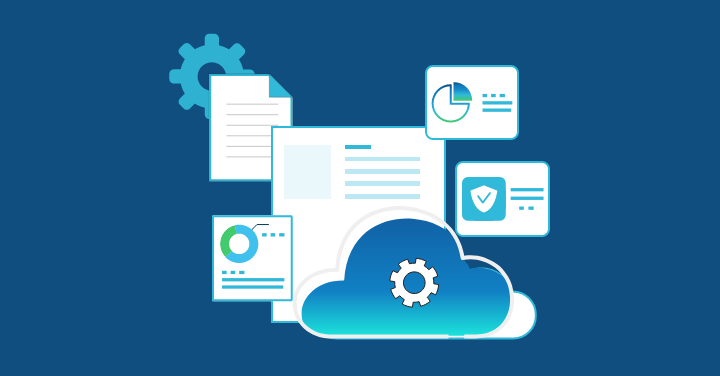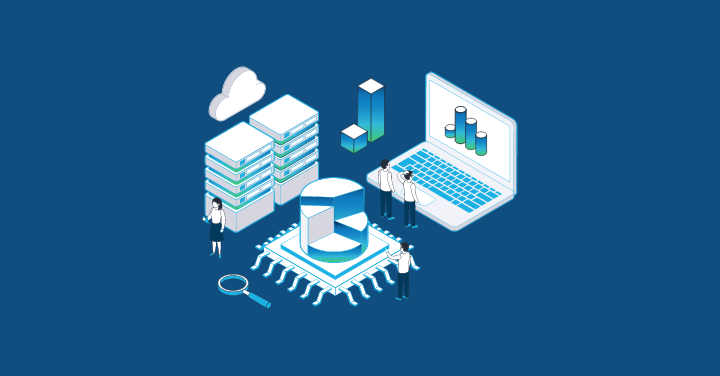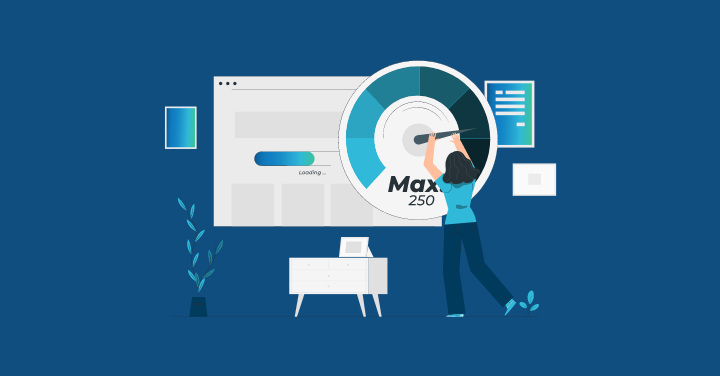Introduction
Network Flow analysis is a crucial aspect when comprehending a network’s workings. Network analysis makes it easier to see how traffic flows, providing insight into the performance metrics. This procedure can top the problematic areas that may slow down and make corrections to enhance the flow of operations within the network bandwidth.
By monitoring flow records and network traffic patterns, which include details about the traffic’s source, destination, and volume, you strengthen the network.
Our discussion in this section presents why knowledge about the flow of your network is essential for anyone operating a digital environment.
You collect and analyze data to ensure no errors, enforce impenetrable security measures, maximize performance, increase visibility across systems and networks, and quickly resolve any issues that could obstruct progress.
What is Network Flow Analysis?
Traffic analysis, also known as network flow analysis, focuses on monitoring the movement of data packets and bandwidth usage on the network.
By studying this movement, we understand how our traffic behaves and how it is utilized. Tracking these movements uses all sorts of protocols, but at the core of nearly all these is NetFlow analysis.
Developed by Cisco Systems, Inc., NetFlow is a methodology for obtaining data on IP traffic that travels through your networks. It works like a mirror through which people who manage networks can monitor and even scrutinize records of this constantly “flowing” data without distorting the process.
NetFlow analysis provides piles of valuable information, including the source IPs, destination IPs, ports used in communication between devices, and the speed at which the communication occurs.
How does Network Flow Analysis work?
Monitoring of network flow is all about analyzing traffic in some steps. It begins with sensing, wherein gadgets capture such details as the streams traversing their boundaries.
From there, this information gets sent over to a flow collector.’ At the flow collector’s end, it receives this data, stores it securely, and stages it for further inspection. After that, these records are summed up to get the overall picture of the traffic distribution throughout the network.
All this means that the folks who manage networks can focus more on reality on what is happening – they have more vivid depictions of what is happening to networks; they comprehend more articulate ways of utilizing resources, and they can keep all the wheels greased based on trends in the network traffic.
Data Collection
It is always very crucial to collect data. Specifically, it entails that devices in the network copy information about the flows through them based on specific criteria, such as what is in the headers of packets.
They create flow records, which contain details such as the source and destination of the data, IP addresses, port numbers, protocols used, and the data transfer rate per second.
Arg it’s not just a fun way to collect data, and it’s a helpful precursor to analyzing shit further down the line and making cracking visuals.
So, from the monitoring efforts with network performance, admins receive detailed and complete information as the foundation for taking more innovative steps, improving security, and having more time to think about such things as capacity planning.
Flow Exporting
Flow exporting means forwarding information concerning traffic flowing on devices to a specific place known as the flow collector.
This assists in analyzing the data in more detail or, in other words, getting a closer look at it.
When a device acts as a flow exporter, it examines the network traffic by detecting the IP addresses and the number of bytes transferred.
It then groups this information into records and sends it using specific procedures or standards, including NetFlow.
Flow Aggregation
Flow aggregation arranges and collects small amounts of network traffic data into larger blocks, making it easier to analyze.
When we piece together flow records from different parts, we get a complete overview of the network traffic and how data is being transported.
By categorizing everything properly, we can easily observe how well the network is performing.
If traffic is processed at a slower-than-normal rate (bottleneck) or if too much information is processed at once (congestion points), we can quickly detect the specific segment causing the issue.
Then, based on the available information, we can decide how to improve things so that they run more efficiently.
Data Storage
Data storage, therefore, is a critical aspect of network flow because it involves storing flow records for retrieval and analysis.
These records consist of valuable data that allows one to see network traffic flow, overall performance, and other critical data.
Archiving this data is crucial for understanding a network’s performance over time.
It helps identify and isolate strange occurrences or conditions that arise so that decisions can be made about the correct action to improve or correct the situation.
Furthermore, if something is incorrect, these historical images contain pointers as to where to look when hunting for why problems began in the first place.
Data Analysis and Visualization
Looking into network traffic and its behavior is vital for those who keep our internet running smoothly.
They use data analysis to dive deep into what’s happening on the network, like figuring out which devices are chatting a lot or spotting any weird glitches that shouldn’t be there.
This helps them make intelligent choices about fixing problems or improving the network.
With visualization, all those numbers and technical stuff are turned into pictures like graphs, so it’s easier to see what’s happening at a glance.
It’s like turning a complicated book into a comic strip that tells you everything you need to know without reading every page.
Benefits of Network Flow Analysis
1. Fixing Intermittent Performance Issues Round Trip Time
Eradicating bottlenecks such as RTT, that is, how long it can take for data to go round-trip, is equally wise for the network. When inspecting the available statistics concerning the traffic that visits your site, it is possible to determine precisely why such occasional issues occur. This assists when trying to identify things skewing round-trip times, and it is one of its best indicators.
2. Boost Cybersecurity
It is essential to augment a network’s security using network flow analysis to observe traffic patterns and notice various activities or potential security threats. Managers scrutinize these details to identify if something is wrong, search for security problems or unusual behaviors, and act swiftly. Companies can observe threats as they occur and respond quickly to prevent data and resources from being accessed or damaged by malicious software.
3. Optimize Your Network and Save Money
Network flow is, in essence, about assisting organizations in enhancing their operations more efficiently and with less cost.
Through data flow analysis in the network, organizations can identify resource underutilization, control bandwidth consumption, and thus contain running costs.
Having monitors to observe the traffic on a specific network enables the admins to know what is being done with the data in circulation.
They will know where large data packages are congested or, on the other hand, a lack of data flow and adjust the system to function optimally.
This implies having sufficient bandwidth for significant things while avoiding the unnecessary expenditure of system parts that are not essential.
4. Enhanced Visibility
The managers can see who sends lots of data, watch what users are doing, and determine how some application or service will influence the workflow.
This gives them enhanced business insight to remain ahead by keenly observing activities.
They can detect and correct any irregularities before things get out of hand or affect other operations. Best Practices for Effective Network Flow Analysis
5. Regular Monitoring
Network managers can also monitor traffic on the network and measure statistics that describe how sound things are running, looking for where things might slow down, where to apply resources, and how to move data without a hitch.
Since everything runs constantly, it is easier to detect that something is wrong—abnormally—and thus, problems can be quickly solved.
6. Integration with other tools
Complementing network flow analysis with tools such as network traffic analysis (NTA) solutions will give organizations a holistic view of what is going on in their network space.
This makes them distinguish how various network data bits relate to each other; this gives them a clear view of how their networks perform and their behavior.
All this means that the network folks can know why issues arise, where security threats are likely to emerge, and, most importantly, how best to apply available resources effectively.
What are the different Components of Network Flow Analysis?
1. Exporter
This vital figure goes by the exporter’s name in checking out network traffic.
Its job is precisely simple, but it carries enormous importance.
Let’s consider that a ‘user’ has requested a ‘server’; the exporter observes these swirling data packets and categorizes them as flow records.
With these records, you get handy things such as where those IP addresses are going, which ports they are using, what protocol they are fond of chattering in, and what size of data chunks they deliver.
Thus, when discussing how to keep networks on the move and how to solve the puzzles of web traffic, having an exporter compile all that helpful information plays a central role.
They make it possible to avoid ineffectual monitoring and targeting network flow trials with little evidence about their behavior and trends.
2. Collector
In network flow analysis, we use a similar term called a collector.
Its job is to capture and store all the flow records from something known as the exporter part.
By gathering such documents, we can closely examine them, sort them, and ensure proper storage.
This step is crucial because it makes the information available for future use and helps us determine how data is transferred through networks – these are the traffic flows.
Using these patterns and the overall data being transmitted or received, network overseers can gain valuable insights into what is happening in their area of responsibility.
3. Application
The app is the final component that can be used to check out the network flow.
It looks for and decomposes the information concerning the traffic in the network that has been collected.
This information is sensibly different, for it uses these methods to show us what is going on with our network traffic, such as the traffic quantity and its flow.
In this way, people in charge of various networks can notice patterns, see when something peculiar is going on, and determine how to make their networks perform and be more secure simultaneously due to facts and patterns observed.
This app is essential because it provides them with everything they require to comprehend and enhances their existing networks by providing them with a much-needed view of the data regarding network traffic.
It assists those operators in getting a good understanding of what is going on in their systems to maintain operations and have everything secure.
Why is Network Flow Analysis Necessary?
Direct Validation of Design requirements
Looking into network flow data, we can check if a network meets its design goals.
Those managing networks can ensure everything functions correctly and meets its targets by monitoring and studying the patterns and volume of network traffic.
This involves ensuring enough bandwidth for different types of services as per their agreements, which ties back to quality of service (QoS) standards.
Analyzing how data moves through the network provides important clues about traffic behavior, helping identify bottlenecks or issues that could prevent the network from operating efficiently.
Easy Expansion and System Modifications
By looking into network flow and the patterns of traffic moving through it, folks who run networks can figure out how to grow or change things without much hassle.
They dive into records that show where data’s going and coming from, which helps them see if the network can handle more action or needs some tweaking.
This way, they spot parts that aren’t keeping up and determine the required changes so everything runs smoothly as demand increases.
On top of this, understanding how all the pieces fit together in their network gives them a clear picture of intelligent ways to make adjustments or add-ons.
Empower clients to understand their system Better
Clients understand their systems work by looking into network flow and traffic patterns.
This includes seeing how data moves around and spotting any problems or areas that could be better.
With this info, they can determine the best ways to use their resources, beef up security, and ensure everything runs smoothly.
It’s all about giving them the knowledge to tackle issues before they become big problems.
Plus, when clients understand what’s going on with their networks, thanks to these insights into network operations and performance, it makes them happier.
It strengthens the relationship between them and those who manage their networks.
Bring Network Flow Analysis to the Next Level with Motadata
Motadata is a top-notch analytics tool that takes analyzing network flow to another level.
Its features let organizations monitor and understand their network flow data better.
With its advanced analytics, Motadata digs deep into network traffic details, including how much there is and how it behaves.
Motadata provides a complete picture of network performance, security status, and resource usage by integrating with other network monitoring tools.
This helps those in charge of networks make choices based on solid data to improve performance and security.
Thanks to its easy-to-use interface and strong ability to show data visually, Motadata simplifies the process for operators to analyze and respond to information about network flow.
Organizations can get the most out of looking at their network flows by using what Motadata offers regarding advanced analytics capabilities, ensuring they run smoothly and safely.
FAQs:
When looking for a tool to analyze network flow, look for several important features. Make sure it works well with NetFlow analyzers and can monitor performance effectively.
It should also give you a clear view of traffic patterns, be flexible in its setup, and have the power to create detailed reports and alerts.
Examining network flow can make our networks safer. This is done by spotting weird traffic patterns and possible security issues before they become big problems.
When people who manage networks dive into the data of how information moves around, they can pick out odd behaviors, check if firewalls are doing their job right, and get a heads-up through alerts about any cybersecurity incidents that might be brewing.
Companies need to invest in network flow analysis tools. This will ensure their networks run at their best and improve security measures.
With the right resources, companies can save money and get the most out of their network setup.
This will keep everything about how data moves through the system—network performance—in shape.







